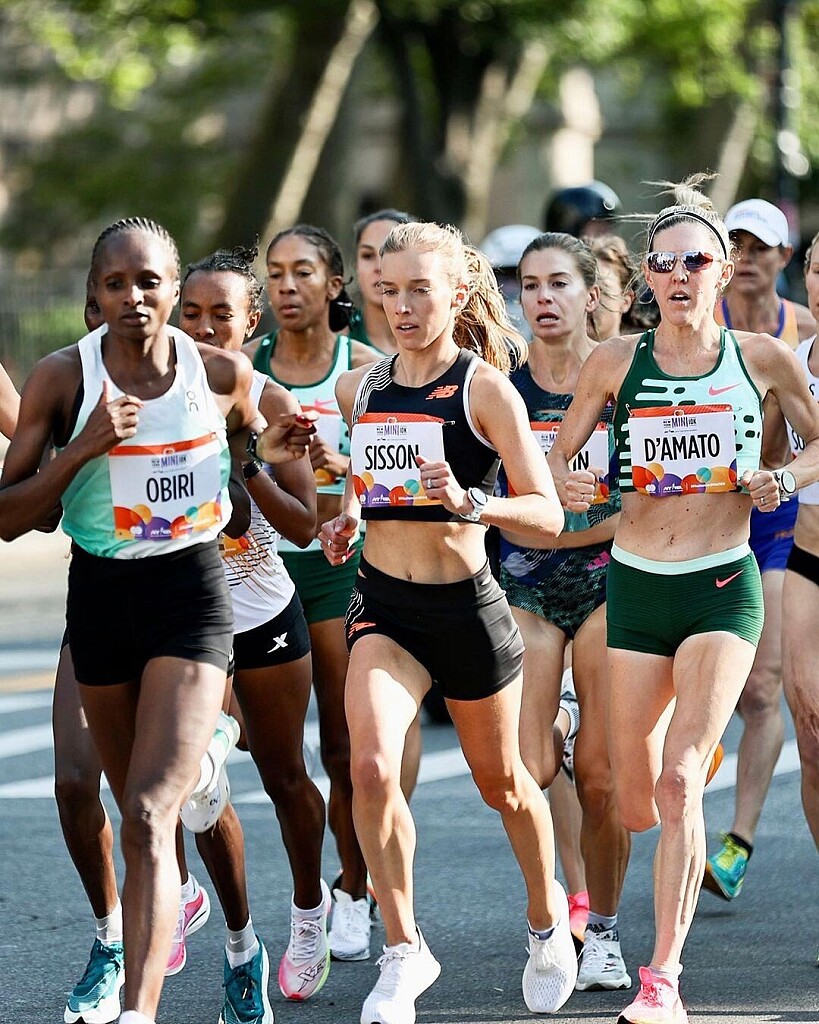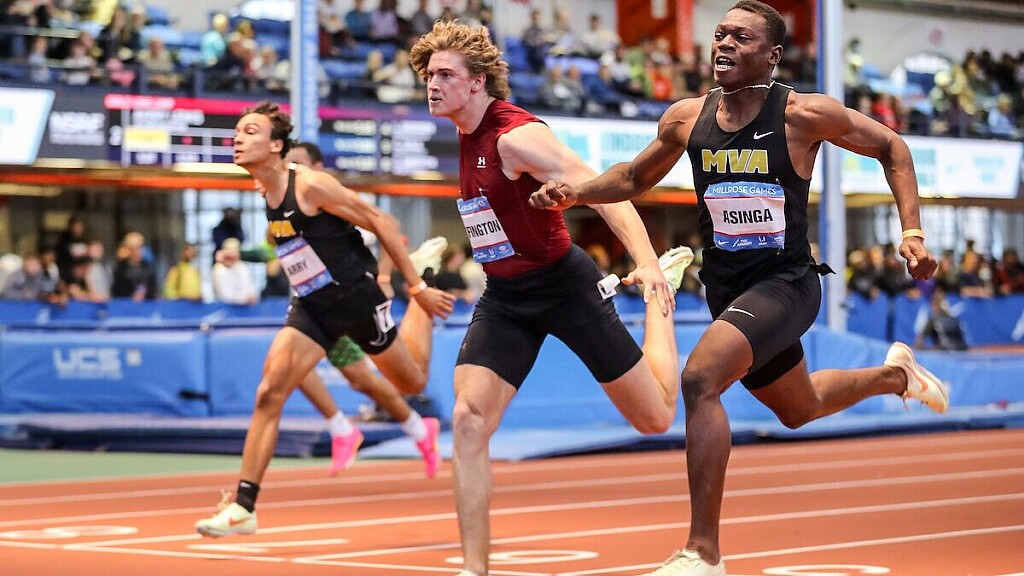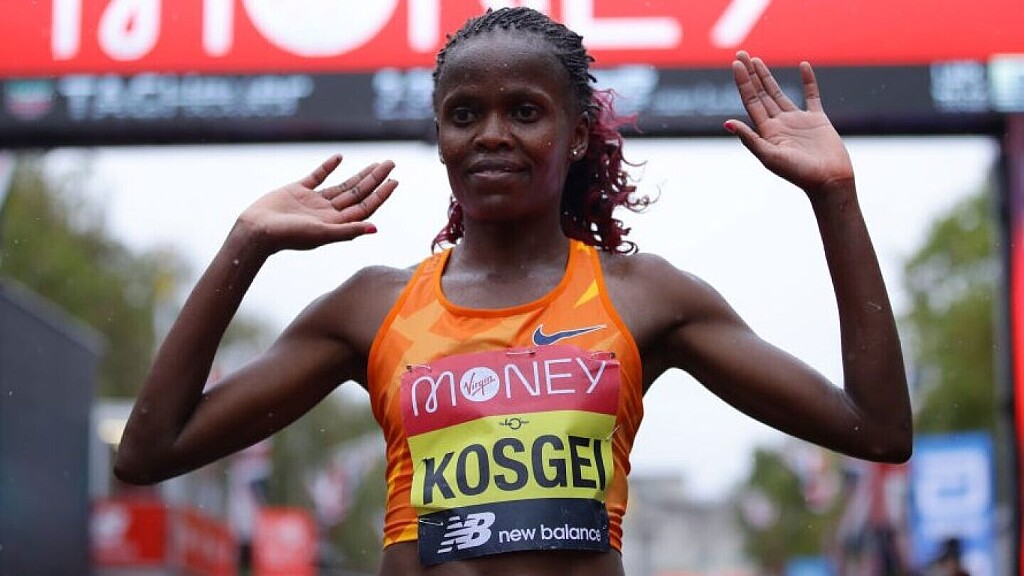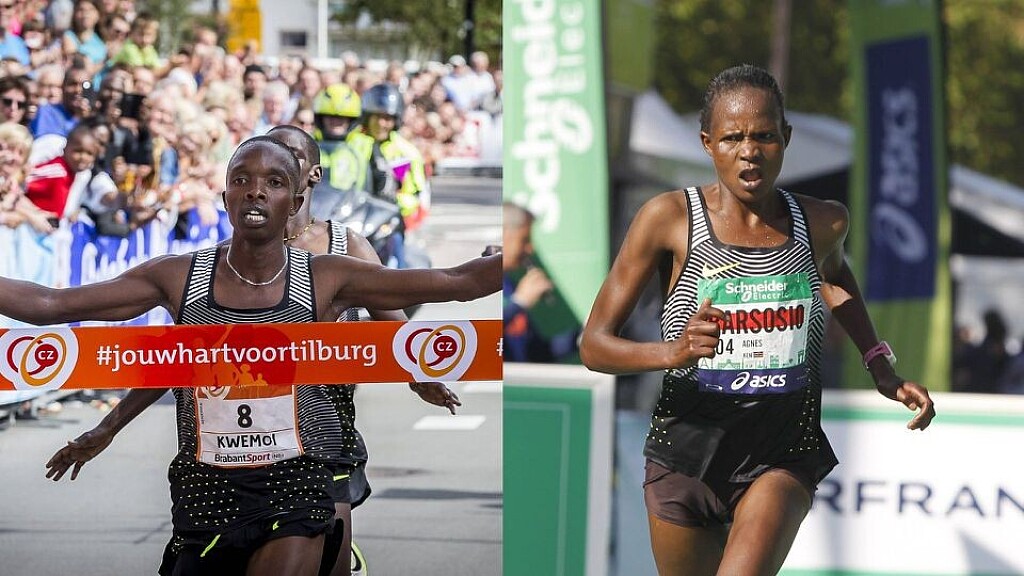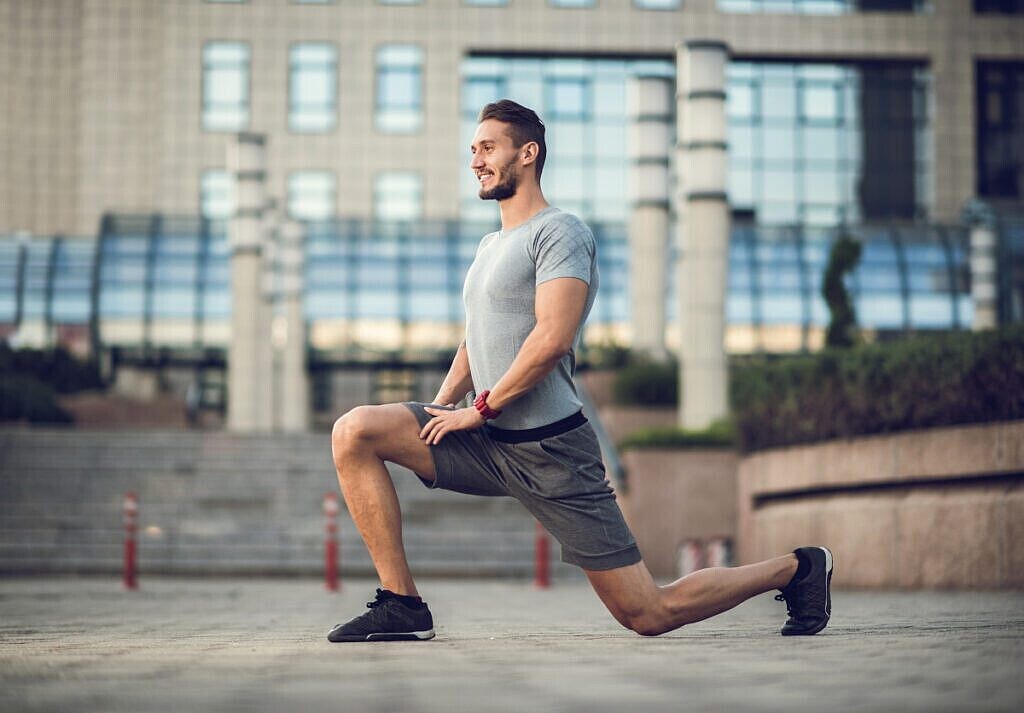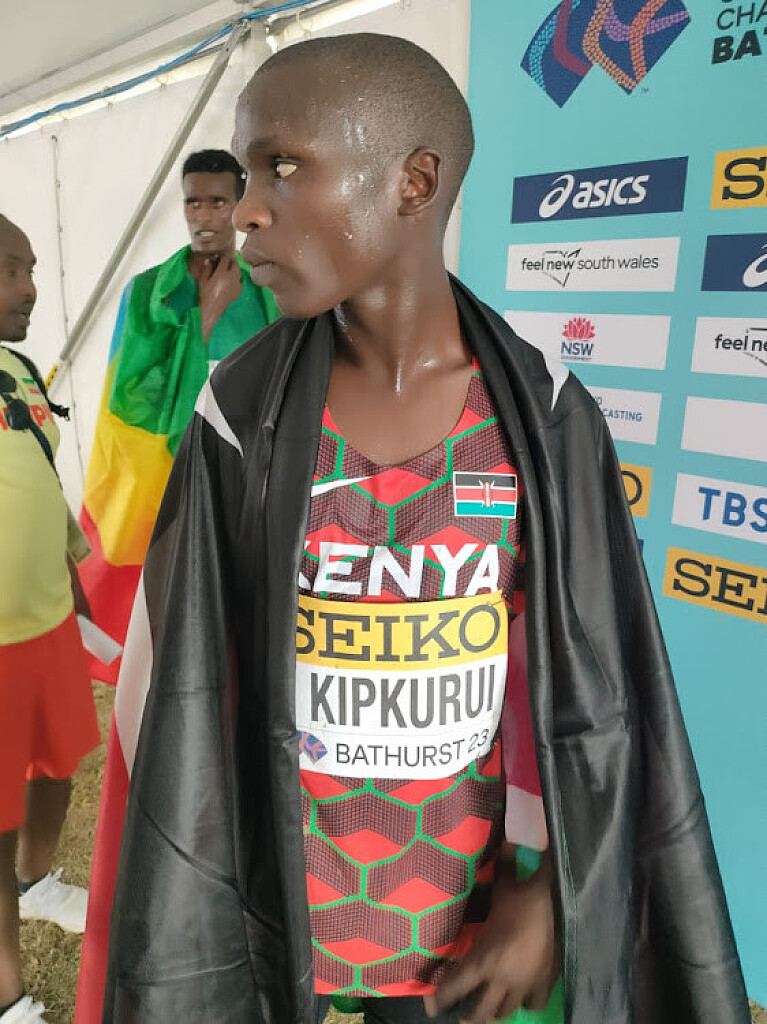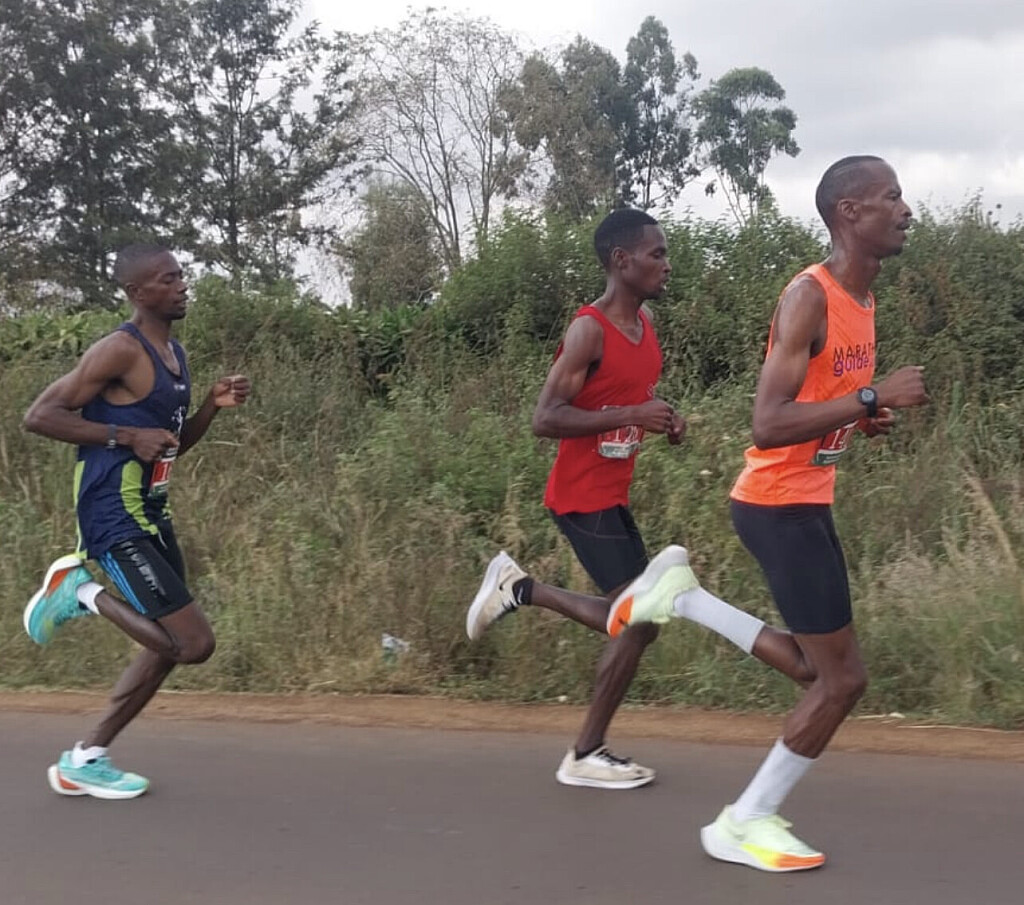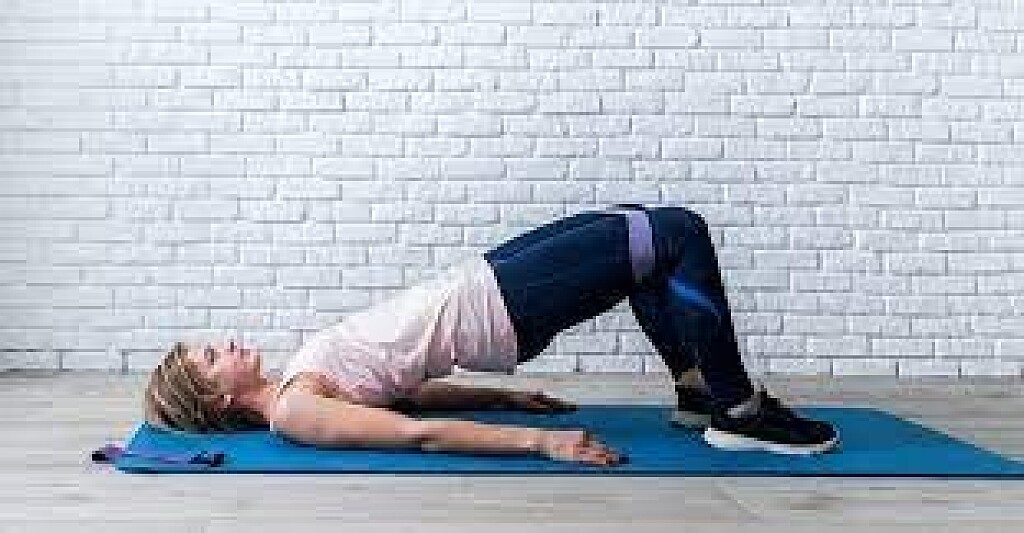Running News Daily
Top Ten Stories of the Week
8/19/2023
These are the top ten stories based on views over the last week.
Obiri, Sisson to Face Off in ASICS Falmouth Road Race
Two high-profile and highly-competitive women in distance running will headline the international elite field at next week’s ASICS Falmouth Road Race. Hellen Obiri and Emily Sisson, both making their Falmouth debut, will face off on the roads for the third time this year when they line up for the seven-mile race on Sunday, Aug. 20.
This year, Obiri has won half marathons in the United Arab Emirates and New York City before winning the Boston Marathon in April. Since her Boston victory, Obiri has also won the B.A.A 10K and was runner-up in the Mastercard New York Mini 10K. Last weekend, she won the Beach to Beacon 10K in Maine.
“The roads and the people of Massachusetts have been good to me so far this year,” said Obiri, a two-time world champion and two-time Olympic silver medalist for Kenya. “I know it will not be easy, but I hope I can keep my record going. It will be nice to test myself before I get back into my preparations for an autumn marathon.”
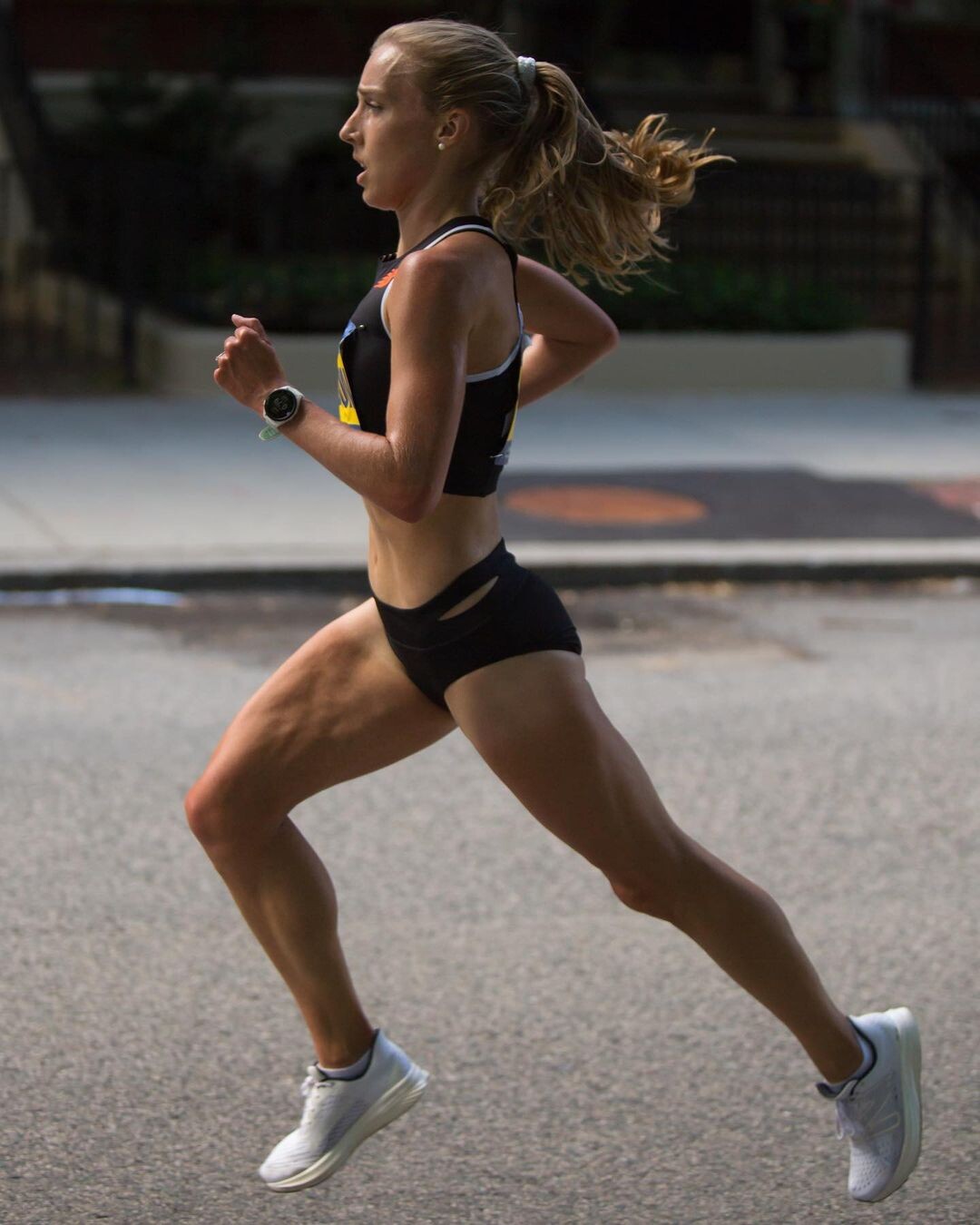
For Sisson, Falmouth is part of the build up to this fall’s Bank of America Chicago Marathon where she will attempt to lower her own American record of 2:18:29 in the event. This past January, she also set the American record in the half-marathon (since broken by Kiera D’Amato) and won the USATF 15km title for the third consecutive year.
“I have not had the chance to race Falmouth before, but I have wanted to ever since I started spending summers in New England,” said Sisson, a graduate of Providence College. “I’m excited for my first Falmouth Road Race to be in the build up to Chicago. I cannot wait to line up in a few weeks time!”
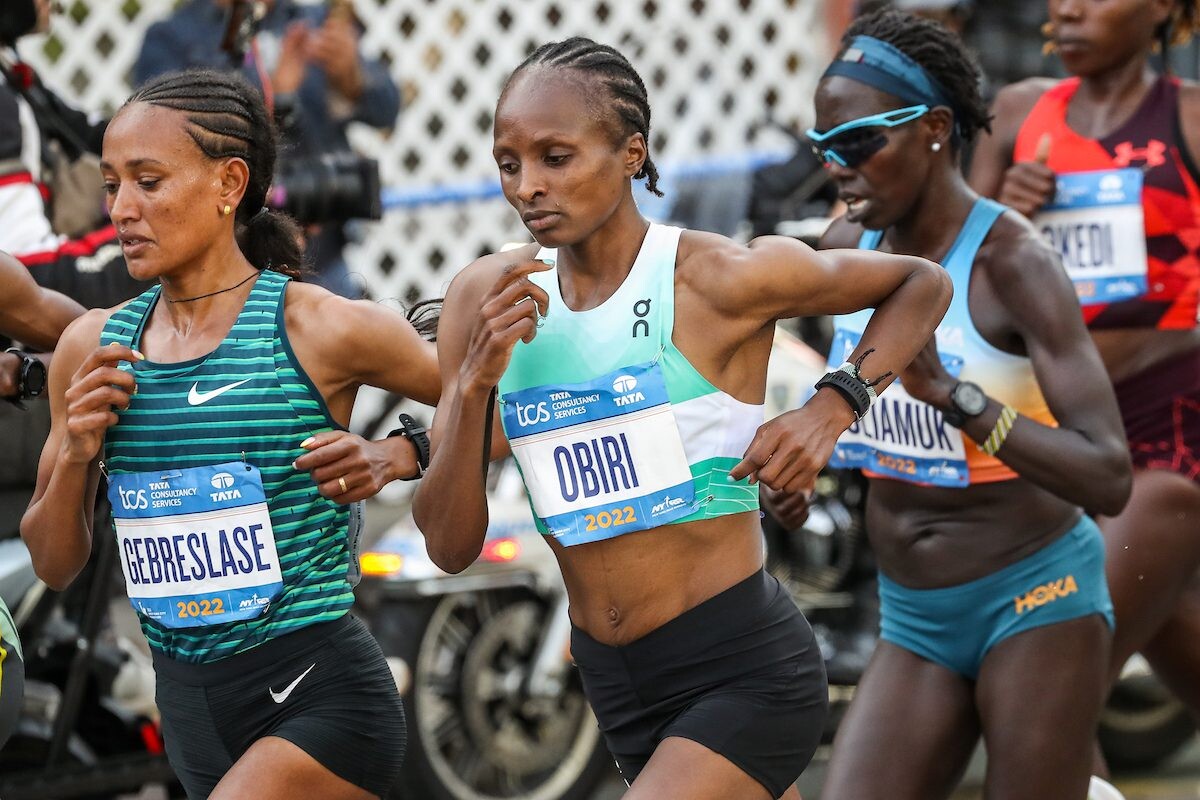
Other top contenders include 2021 Falmouth champion and last year’s runner-up Edna Kiplagat, U.S. 5K Champion Weini Kelati and reigning U.S. 10 Mile champion Fiona O’Keeffe.
Fresh off a victory at last week’s Beach to Beacon 10K in Maine, Addisu Yihune will attempt back-to-back New England wins. The 20-year-old Ethiopian leads the men’s field.
Last year’s third place finisher, David Bett is returning in 2023. Other contenders include 2022 Los Angeles Marathon champion John Korir, two-time Pittsburgh Half Marathon winner Wesley Kiptoo and 2019 NCAA Cross Country Champion Edwin Kurgat.
In the Wheelchair Division, sponsored by Spaulding Rehabilitation, Daniel Romachuk, who set the course record in 2019, will chase his fifth Falmouth win. He championed last year’s race by three and a half minutes over Hermin Garic, the 2021 Falmouth winner who is also returning this year.
In the women’s race, 2022 champion and course record holder Susannah Scaroni will defend her title. Scaroni has dominated the road circuit in 2023 winning the Boston Marathon, New York Mini 10K and AJC Peachtree Road Race in Atlanta. Scaroni will face 2021 women’s champion Emelia Perry and 2022 third place finisher Yen Hoang who won the B.A.A. 10K earlier this year.
The 51st running of the ASICS Falmouth Road Race is the culmination of an entire weekend of running that kicks off with the Falmouth Elite Mile, held this year on Friday evening for the first time. The women’s field is led by former Oregon standout Susan Ejore of Kenya and three-time NCAA Champion Dani Jones. It also includes Belmont, Massachusetts high school phenom Ellie Shea.
The men’s race will welcome the deepest men’s field in its history. Olympic gold medalist Matthew Centrowitz will make his first trip to Falmouth to toe the start line with some of the nation’s top middle-distance runners. Past winner Craig Engels also returns this year as does Seekonk, MA native Johnny Gregorek, a World Championship qualifier who won the Guardian Mile in Cleveland last month and Vince Ciattei who won last weekend’s Beale Street Mile in Memphis.
In the Wheelchair division, both Romanchuk and Garic will also compete as will Scaroni, Perry and Hoang in the women’s race.
“From the track to the roads, there is going to be exciting racing to witness all weekend in Falmouth,” said Jennifer Edwards, Executive Director of Falmouth Road Race, Inc. “It’s an honor to welcome so many legends and future legends of the sport who will lead our field of 10,000 to the finish line.”
The Falmouth Track Festival which includes the Falmouth Elite Mile will be held at 7 p.m. Friday, Aug. 18 at Falmouth High School. The ASICS Falmouth Road Race gets underway at 9 a.m. on Sunday, Aug. 20 with athletes running the traditional course starting in Woods Hole and ending at Falmouth Heights Beach.
(08/11/23) Views: 111100m world junior record holder suspended for doping
Suriname’s Issam Asinga, who only two weeks ago stunned the athletics world by shattering the U20 100m world record at the South American Championships in Sao Paulo, Brazil, has been provisionally suspended by the Athletics Integrity Unit (AIU) for the alleged use or presence of a prohibited substance . The suspension, which went into effect Wednesday and was announced by the AIU on Friday, is for the presence of GW1516, a substance that modifies how the body metabolizes fat, and which can boost endurance.
Provisional suspensions are issued before a hearing to determine whether the charges warrant any official punishment.
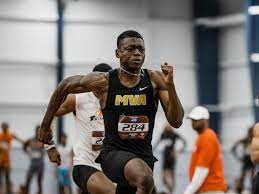
Botswana’s Nijel Amos, who won silver in the 800m at the 2012 Olympics in London, received a provisional suspension last year for the presence of the same metabolite ahead of the World Athletics Championships in Eugene, Ore. He ended up receiving a three-year ban.
GW1516 was originally developed to treat obesity and diabetes, but is not approved for human use, since it was discovered to be carcinogenic. It is banned in and out of competition, and not eligible for Therapeutic Use Exemption (TUE). A USADA bulletin from 2019 says GW1516 is also sometimes known as cardarine or endurobol and has been found in some supplements, even though it is illegal. In 2017, there were 31 sanctions worldwide related to its use.

The 18-year-old Asinga clocked an impressive 9.89 seconds with a tailwind of (-0.8m/s) on July 28 to become the first South American sprinter to break the 10-second barrier in the 100m. His blazing run surpassed the previous record of 9.91 seconds set by Botswana’s Letsile Tebogo at last year’s World U20 Championships in Cali, Colombia, and also broke the South American area record, bettering the 10.00 mark set by Brazil’s Robson da Silva in 1988.
In addition to claiming a world record in Brazil, Asinga’ also picked up a free PlayStation 5 with his performance. A tweet posted last week shows retired American sprinter Justin Gatlin handing Asinga the video game console with the caption “The special moment when Justin Gatlin promised Issam Asinga a PS5 if he ran a legal 9.8 and he delivered!”
Asinga has made headlines in the 2023 season, running for Montverde Academy near Orlando, Fla. Earlier this year, he beat world champion Noah Lyles in a 100m race to break the U.S. high school record, and a week later, broke Lyles’s 200m high school record in 19.97 seconds.
The provisional suspension appears to have dashed Asinga’s dreams for gold at the World Athletics Championships in Budapest later this month, where he was set to run the double. The sprinter has plans to head to Texas A&M University in the NCAA on a full track and field scholarship this fall.
(08/12/23) Views: 105Running Magazine
World record holder Brigid Kosgei excited ahead of New York Marathon debut
Brigid is set to showcase her prowess in the New York Marathon as she joins an elite lineup of champions for an exhilarating head-to-head competition.
World marathon record holder Brigid Kosgei is all set to grace the grand stage of the New York Marathon for the very first time on Sunday 5 November.
The anticipation is palpable as she readies herself to compete against an elite field of fellow Kenyan athletes, including defending champion Sharon Lokedi, Peres Jepchichir, and Hellen Obiri.
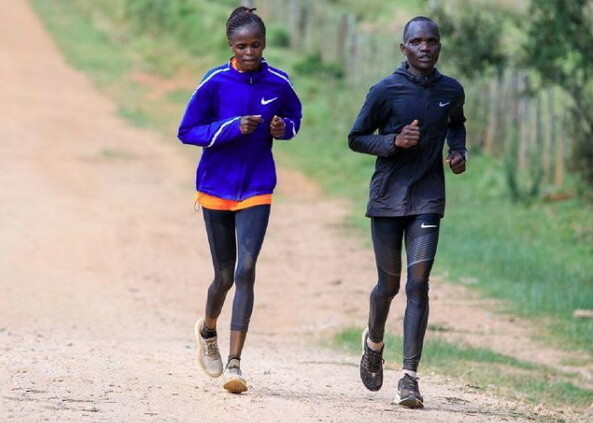
With an impressive track record in her arsenal, Kosgei is bubbling with excitement about the opportunity to add another Major title to her name.
The 29-year-old women's marathon world record holder is no stranger to pushing her limits.
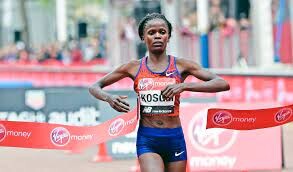
"I am not worried about the course, as I have had success in hilly marathons before," she remarks.
Kosgei acknowledges the challenge posed by her fellow competitors and emphasizes the importance of being in peak form to vie for victory.
Last year's champion, Sharon Lokedi, made an impressive marathon debut by clocking a time of 2:23:23.
Meanwhile, Hellen Obiri clinched victory at the Boston Marathon earlier this year in only her second attempt at the distance.
Peres Jepchichir, the reigning Olympic and 2021 New York City champion, boasts an unparalleled track record. Yet, it's Kosgei who stands out on paper with her astounding personal best of 2:14:04.
The upcoming New York Marathon is set to create history as the reigning champions from the TCS New York City Marathon, Boston Marathon, and Olympics, along with the world-record holder, line up in a thrilling face-off.
The clash of titans promises an unforgettable race that will be etched in the annals of marathon history.
Hellen Obiri, a decorated athlete with two Olympic medals and seven individual world championships medals, stands as a testament to consistent excellence.
Her recent triumph at the Boston Marathon underscores her adaptability and prowess in tackling new challenges.
Jepchichir, on the other hand, boasts a unique feat of winning the Olympic marathon, TCS New York City Marathon, and Boston Marathon.
With two world championships gold medals in the half marathon, she is a force to be reckoned with.
In the midst of these formidable competitors, Brigid Kosgei radiates determination. "I am very excited to make my New York City debut this fall, and attempt to win my fourth different Major."
(08/11/23) Views: 102
Festus Chuma
Another big blow! The Athletics Integrity Unit suspends Rodgers Kwemoi and Agnes Barsosio
The 2019 Hangzhou Marathon champion Agnes Barsosio and the 2022 N Kolay Istanbul Half Marathon Rodgers Kwemoi are the latest Kenyans to be summoned by the AIU.
The Athletics Integrity Unit has today, August 11 suspended other two Kenyans days after sanctioning Michael Kunyuga Njenga.
The 2019 Hangzhou Marathon champion Agnes Barsosio and the 2022 N Kolay Istanbul Half Marathon Rodgers Kwemoi are the latest Kenyans to be summoned by the AIU.
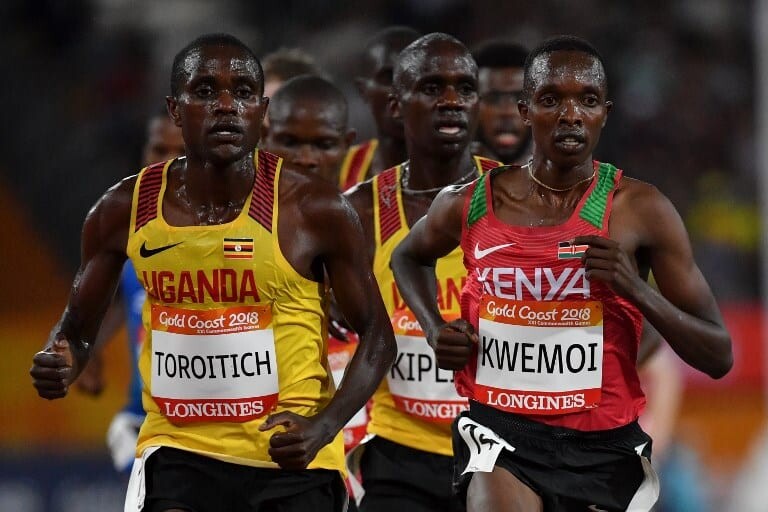
Barsosio has been suspended after testing positive for the use of a Prohibited Substance/Method – ABP. Barsosio has been inactive in athletics since her last race was during the 2021 Lisboa Marathon where she finished fourth.
In a tweet posted on their Twitter account, the AIU said: “The AIU has provisionally suspended Agness Jeruto Barsosio (Kenya) for the use of a Prohibited Substance/Method – ABP case.”
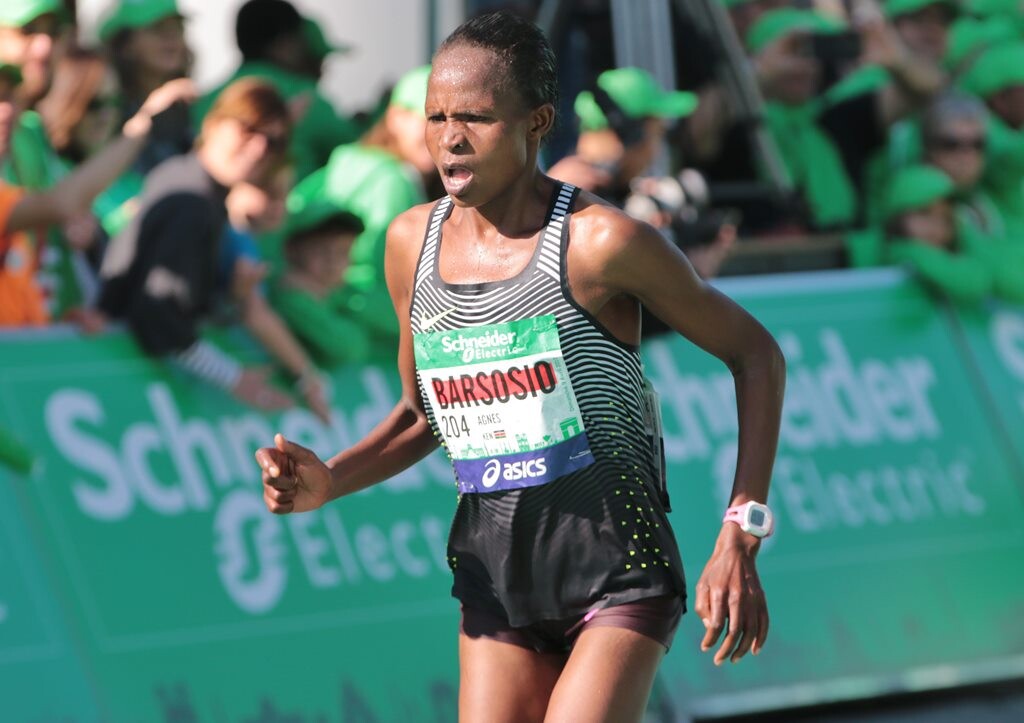
The same case applies to Kwemoi who has also been suspended for the use of ABP. Kwemoi has competed in a series of 10,000m races in Japan. He opened his season with a 10th place finish 31st at the Kanakuri Memorial Middle- and Long-Distance Invitational Meet.
He then proceeded to the 1st Nittaidai Challenge Games and 67th Central Japan Corporate Teams Athletics Championships where he finished ninth and third respectively.
The AIU has also suspended the latest kid on the block, Surinam’s Issam Asinga for the use of Prohibited Substance (GW1516). The 18-year-old has made headlines this year after breaking the Under-20 100m world record at the South American Championships.
The sanction means the trio is suspended temporarily from participating in any competition or activity in Athletics prior to a final decision at a hearing conducted under the World Athletics Anti-Doping Rules or the Integrity Code of Conduct.
(08/11/23) Views: 96Abigael Wafula
Returning Kipngetich Ngeno Aiming For Glory In Budapest
National 800m champion Kipngetich Ngeno cannot wait to wear the Kenyan colors once again during the World Athletics Championships that starts on August 19 in Budapest, Hungary.
Ngeno is making a return to Team Kenya for the first time since competing at the 2019 World Championships in Doha, Qatar.
Ngeno clinched victory at the national championships before finishing second at the national trials two weeks later to seal his spot in the Kenyan team.
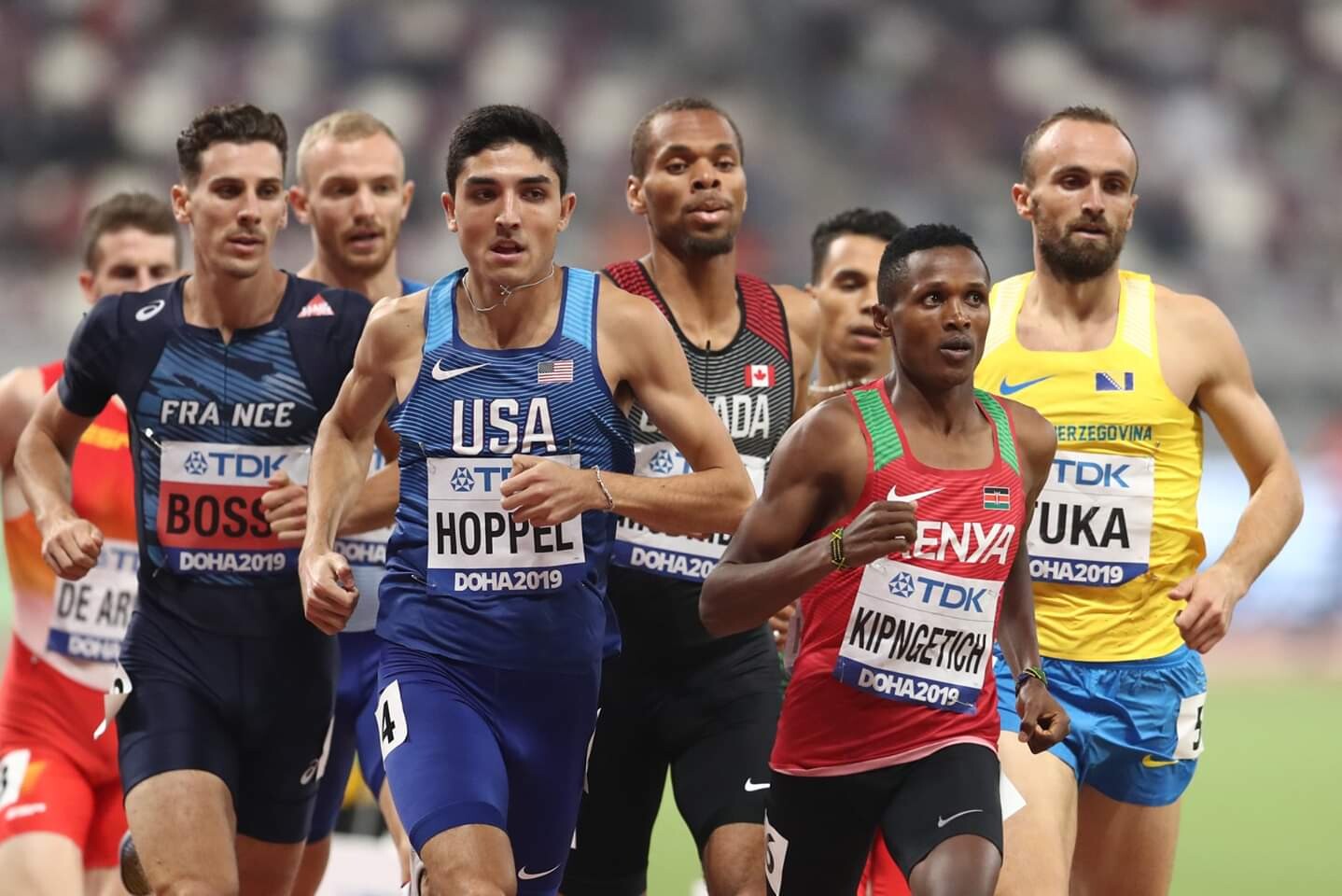
“I have been out for quite some time. I missed the Tokyo Olympics and last year’s Worlds in Oregon. I am of course happy to be back in the national team. It has not been easy in recent years,” Ngeno told Citizen Digital.
“I secured employment with the Prisons Service after which I had to work so hard to reduce weight and come back to my fitness levels. I am happy I am now fully fit.”
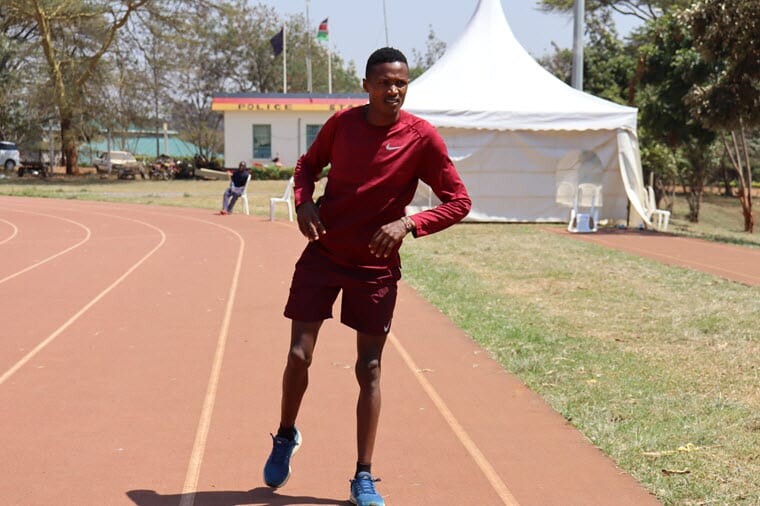
Despite failing to advance past the semis stage in Doha, Ngeno says he drew valuable lessons ahead of this year’s event.
“It was my first World Championship with the senior team. I learned a lot especially on how to control the race in the heats and semis. I am now experienced enough to handle pressure in such an event,” he said.
The 2018 world junior silver medalist believes Kenyans can sweep the podium in the two-lap race where he will team up with defending champion Emmanuel Korir, Olympic silver medalist Ferguson Rotich and the fast-rising Emmanuel Wanyonyi.
“I think it is a very strong team. We need to just manage ourselves in the heats and semis and if we all make it to the finals it will be very difficult to beat us,” said Ngeno who trains at the Kericho Athletics Camp.
(08/11/23) Views: 94Gilbert Kiprotich
Dynamic vs. static stretching: Which is better?
Both have benefits depending on when and why you’re stretching.
Stretching is an essential component of any runner’s routine, aiding in flexibility, performance, and injury prevention. When it comes to stretching, there are two main techniques: dynamic stretching and static stretching, each offering distinct advantages for runners.
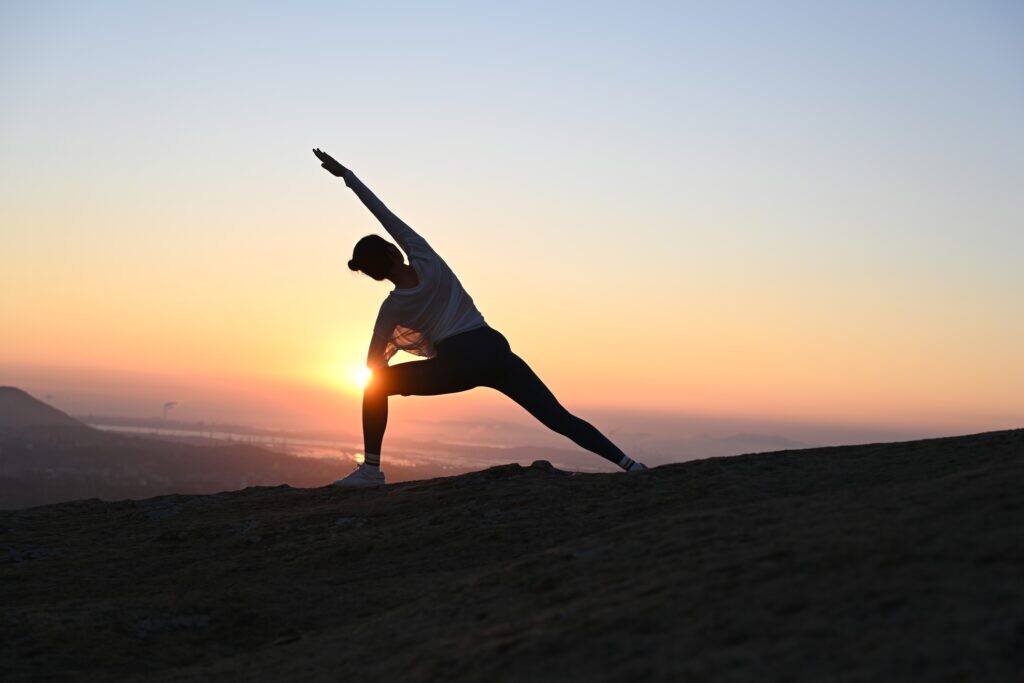
Dynamic stretching
Dynamic stretching involves controlled movements that mimic the actions of the activity about to be performed. This type of stretching is particularly advantageous for runners as it helps warm up the muscles and joints, increasing blood flow and heart rate.

The continuous, rhythmic motions of dynamic stretches prepare the body for the impending workout by improving range of motion and promoting better neuromuscular coordination. Leg swings, high knees, and walking lunges are examples of dynamic stretches. They activate the nervous system, enhancing muscle responsiveness and power output. Incorporating dynamic stretching into a pre-run routine can lead to improved performance and reduced risk of injury.
Static stretching
Static stretching entails holding a stretch for a prolonged period, usually 15-60 seconds. While static stretching can be beneficial post-workout for enhancing flexibility and aiding in recovery, its application before a run is debated. Some studies suggest that performing static stretches before a run might lead to decreased muscle power and performance due to temporarily relaxed muscles. However, static stretching post-run, when muscles are warm and pliable, can help prevent muscle imbalances and maintain overall flexibility.
Dynamic vs. static: a balance
The key is to find the right balance between dynamic and static stretching. Pre-run, focus more on dynamic stretches to elevate heart rate and activate muscles. Gradually transition into movements that mimic the running stride to enhance range of motion and promote blood flow to the muscles. As the body warms up, these dynamic stretches should become more running-specific, such as leg swings or high knee marches.
Post-run, static stretching can be incorporated to improve flexibility and maintain muscle health. Stretching muscles that have been worked during the run, such as hamstrings, quads, and calves, can aid in recovery and prevent tightness. Holding stretches for 15-60 seconds without bouncing can gradually improve muscle length over time, reducing the risk of injury and enhancing overall flexibility.
(08/12/23) Views: 91Brittany Hambleton
Coach Kirwa believes Kipkirui will step into Kandie's shoes
National team head coach Julius Kirwa has exuded confidence in Ishmael Kipkurui's potential to effectively step into the shoes of Kibiwott Kandie at the upcoming 2023 World Athletics Championships.
Kandie, who had punched a ticket to fly the country's flag in the 5000m, withdrew from the team owing to a nagging hamstring injury.

"We made the changes last week. Ishmael is in good form and he has proved himself as a junior athlete. I'm confident he'll live up to expectations," Kirwa said in an exclusive interview on Thursday.
The Commonwealth Games 10,000 metres bronze medallist will miss the World Championships for the second time in a row after staying out of Oregon 22.
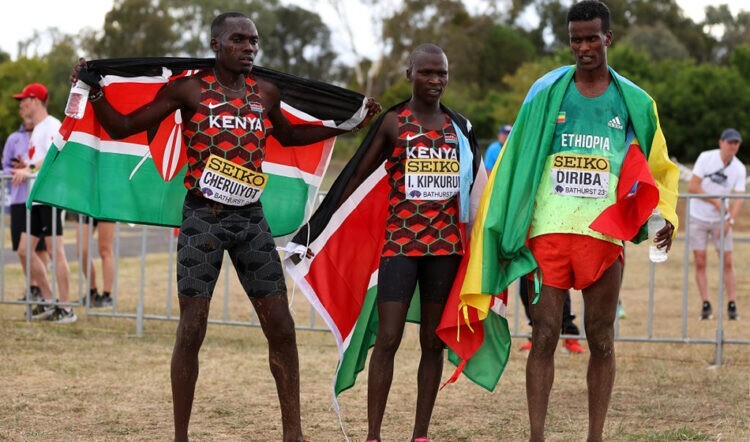
Last year, the World Half Marathon silver medallist, almost sealed a slot on the Kenyan plane to Oregon after clinching the national trials but failed to crack the qualifying time.
He last held forte for the nation at the 44th World Athletics Cross Country Championships in Bathurst, Australia where he finished fifth. His most recent race was in Germany in April during the Adizero Road to Records 10km race, where he finished second in 26:53.
He secured a berth in the men’s 10,000m team despite finishing fourth during the national trials.
“I was in camp for a week when the team reported and training was going on well. I tried to persevere for some days while training but there was no change hence the break to avoid worsening it," said Kandie.
While regretting the unfortunate turn of events, Kandie vowed to bounce back stronger at the World Half Marathon Championships that will be held in Riga, Latvia on October 1.
“I know a lot of people are disappointed I'll not be traveling with the rest of the team to Budapest, especially after I experienced a similar fate last year when I also failed to make it to Oregon," Kandie stated.
Meanwhile, Kirwa has said he is satisfied with the amount of effort expended in practice even as the team continues to put the final touches ahead of their departure to the Hungarian capital.
"We have trained well enough and all the athletes are in good shape. We are expecting a good performance in Budapest later in the month," Kirwa said.
The seasoned gaffer also tipped Kenyan sprint sensation Ferdinand Omanyala to steer the country to unprecedented glory.
"He is in his peak this season and I have no doubt in my mind he'll be pulling off a major surprise at the World Championships," Kirwa said.
(08/14/23) Views: 87Tony Mballa
Record smashed at the 24th KATA 10K Time Trial held this morning August 16 in Thika
The 24th edition of the KATA time trial monthly series was held today on 16th of august 2023 at the Kenya Athletics Training Acadamy in Thika Kenya. The 10km saw the time trial record holder Peter Mwaniki improve the course record in a time of 28:39 from the his previous time of 29:00.
In the womens 10km race saw the return of our record holder Lucy Mawia who also has been racing in europe, she won the race in a time of 33:39. she was followed by marathoner Kellen Waithira in a time of 35:49 while Emily Chepkwemoi came in third in a time of 36:21.

Raphael Karita was the runner up in the mens 10k clocking 30:07 missing his pb by fivd seconds. Evans Kiguru came in third clocking 30:39.
In the 5k race Fredrick Kiprotich came home first with a time of 15:00 while Levis Kuria came in second clocking 15:19 Antony Mukundi sealed the podium in 15:38.
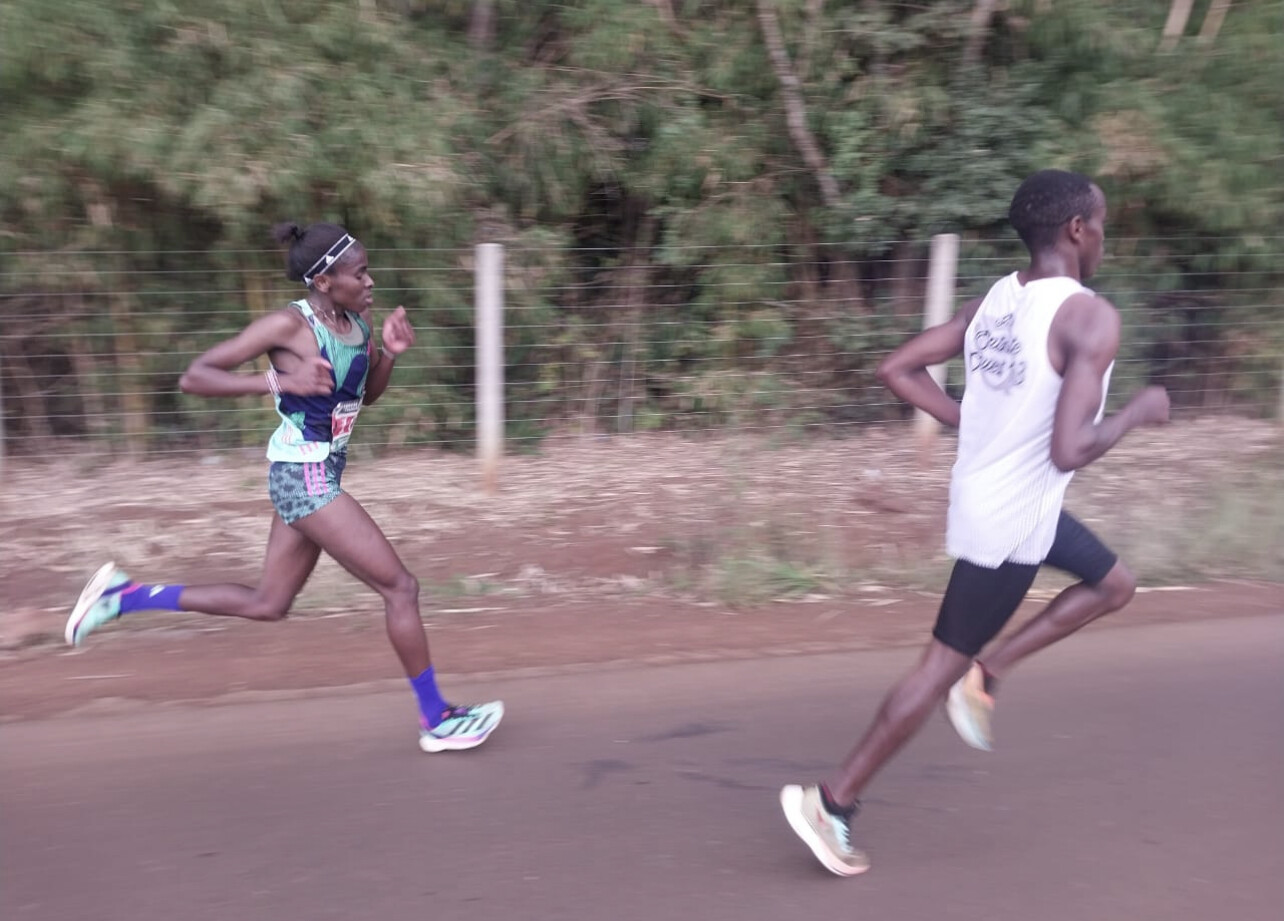
In the womens race Caren Jepkemoi won in a time of 18:58. She was followed by Virginia Wanjiru in 20:10 and Lilian Musenya came home third in 22:33.
In the masters, 42-year-old Paul Ng'ang'a clocked 33:56 while 61-year-old Charles Ndirangu clocked 38:30 in 10km race which is 85% age-graded.
This time trial comes two weeks before KATA's biggest race of the year, the Double 15k (10k+break+5k) which will be held on September 2, 2023 at KATA in Thika. Total of 33K KES of prize money up for grabs plus 20K KES bonus for both men and women winners if they break the world record,
Julius Koskei holds the world record for the Double Road Race 15k set May 10, 2015 in Pacific Grove, CA USA. He clocked 43:11 that day. His 10k leg was 29:11 and his 5k leg was 14:00. The second leg starts one hour and 45 minutes after the start of the 10k leg.
Risper Gesabwa holds the female record clocking 48:45 in Pleasanton California Dec 21, 2014. Her 10k leg was 32:55 followed by a 15:49 5k leg.
The sport of double racing was started in 2010 in Mexico. The first US Double was held in 2012. Over 300 Double Racing events have been held around the world. The lastest one was the Golden Gate Double 8k (5k+break+3k) held August 6, 2023 in San Francisco.
The Road Race Federation (DRRF) located in Mountain View, CA USA is the governing body of the sport. Rules and regulations have to be followed. The DRRF maintain all stats on all events. This will be the sixth Double event held in Kenya. The director and founder of the DRRF is lifetime runner Bob Anderson who is also the owner of KATA.
10K MEN.
1. Peter Mwaniki 28:39 2. Raphael Karita 30:07 3. Evans Kiguru. 30:39 4. John Kuria. 30:48 5. Paul Ng'ang'a. 33:56 6. Bernard Gicheha 37:33 7. Ishmael Mbugua 38:07 8. Charles Ndirangu 38:30
10k WOMEN.
1. Lucy Mwende 33:39 2. Kellen Waithira 35:49 3: Emily Chepkemoi 36:21
5K MEN.
1. Fredrick Kiprotich 15:00 2. Elvis Kuria. 15:19 3. Anthony Mukundi 15:28 4. Brian Ontieri 15:37 5. Kelvin Ragui. 15:44
5K WOMEN.
1. Karen Chepkwemoi 18:58 2. Virginia Wanjiru 20:10 3. Lilian Musengya 23:23 4. Vera Achitsa. 34:51
(08/16/23) Views: 72Three exercises to ease back pain in runners
A sore back can be a discouraging thing to face as a runner–while you’d love to get out and log some miles, recurrent back pain can be extremely limiting. The jury is out on what, exactly, gives runners achy backs, and it’s probably unique to each person. Maybe you had back issues before you began running, you’re struggling with running form, or you are facing some muscle imbalances.
A study published in Scientific American determined that runners with sore backs often had weaker deep core muscles. Whatever the cause of your pain, there are a few exercises you can do to become an all-around stronger, pain–free runner with a health, mobile spine.

Glute Bridges
Glute bridges engage the glutes and hamstrings, which play a significant role in maintaining proper hip alignment (helping with both structural tolerance and great form) during running.

Lie on your back with your knees bent and feet flat on the floor. Lift your hips off the ground, squeezing your glutes at the top. Lower down and repeat for 12–15 reps, pausing at the top of the pose and holding your glute bridge for longer once you gain strength.
Planks
We all know and love planks (or we should!). Planks target the core muscles and helping to improve stability and support for the spine.
Start by holding a plank position on your forearms and toes, ensuring your body forms a straight line from head to heels. Hold for 20-30 seconds, gradually increasing the duration as you become more comfortable.
Cat-Cow Stretches
This yoga-inspired stretch helps to align the spine and mobilize it, while giving the back muscles a great stretch.
Start on your hands and knees and arch your back like a cat (rounding the spine), then drop your belly towards the floor while lifting your head and tailbone (cow pose). Repeat this movement for 8–10 rounds, pausing at each end of the stretch to take a few breaths or add some gentle side-to-side movement.
Even if you’re on board with adding these exercises to your pre or post-run routine, it is always a great idea to check in with a medical practitioner when you’re experiencing back pain, and important to do so if pain worsens or isn’t alleviated after a few days rest.
(08/14/23) Views: 72Keeley Milne
Is Overhydration More Dangerous than Dehydration?
Here's why you need to monitor your water intake
Being human is all about balance. We strive to find an ever-elusive equilibrium between work and life. We go to yoga classes in hopes of improving our physical steadiness. We eat an assortment of fruits and vegetables, but we also munch on chips and dip. And, from a physiological standpoint, our blood cells need balance, too.
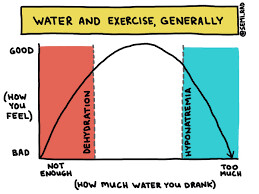
As athletes—especially ones who spend time outdoors during a heat wave—the ethos we usually hear is “hydrate, hydrate, hydrate.” However, a 2020 research article from Stanford University School of Medicine offers a different perspective. In the piece, the study’s lead author notes that overhydrating is actually more dangerous than being dehydrated.
One of the most important things to maintain balance in our blood cells is the sodium-to-water ratio, says Tamara Hew-Butler, associate professor of exercise and sport science at Wayne State University School of Medicine. When you’re dehydrated, you contain less water, causing your blood cells to shrink. However, when you drink some H2O, your cells recover quickly.
When you consume a lot of water (more than three liters in an hour), your sodium levels dip to abnormally low levels, taking you into dangerous territory. If the water count in your body is much higher than your sodium levels, you can develop hyponatremia—a dangerous result of overhydration. “If you drink too much water, all of your cells start to swell,” Hew-Butler says. “That becomes a problem in your brain, because your brain can only swell five to eight percent [beyond its normal size] before it runs out of space in the skull.”
It’s not something to be taken lightly. In some cases, hyponatremia can lead to death, Hew-Butler says. “The amount of water that leads to hyponatremia is different for everyone,” she adds. “It depends on the size of the person, the ambient temperature, and exercise intensity and duration.” However, if you need to quantify it, typically drinking about three liters of water within an hour can cause severe hyponatremia, potentially prompting a seizure, coma, or even death, Hew-Butler says.
Overhydration is a particularly large concern during the summer months. “The first thing that everybody tells you—and it’s not always wrong—is to drink lots of water,” Hew-Butler says. “But, when it’s hot out, more people die from overhydration than they do from dehydration.”
That’s because your blood cells actually retain water as a result of the heat, so you’re not quite as dehydrated as you may think.
This isn’t necessarily new information, Hew-Butler says. “The results of a 1999 study in the American Journal of Emergency Medicine support that hyponatremia is [generally] more common than heatstroke.” She adds that it’s the most common cause of serious illness in the Grand Canyon—more than heat exhaustion, grand mal seizures, nausea, and dizziness.
What should you do to achieve that balance of hydration? Drink to thirst, recommends Allen Lim, a sports physiologist and the founder of sports nutrition brand Skratch Labs. (So yes, that means skipping out on your emotional support water bottle.) However, even when you’re feeling parched, make sure to monitor your H2O intake.
“During exercise, the thirst mechanism will prioritize [sodium] balance over water balance,” Lim says. “As we lose sodium in our sweat, we will naturally drink less water to maintain sodium balance. Since there’s not as much sodium in the body, we don’t drink everything we lose, so we can keep the ratio of water to sodium the same.” Essentially, your body makes you thirsty when that sodium-to-water ratio is skewing high on sodium. And that’s when you should drink water.
You know that old saying, “Listen to your body?” That’s sage advice when it comes to hydration, especially when it’s hot out. “Drinking to thirst is important even though it can result in dehydration,” says Lim. “That dehydration is important to keep the sodium balance correct.”
(08/12/23) Views: 69Outside Online


